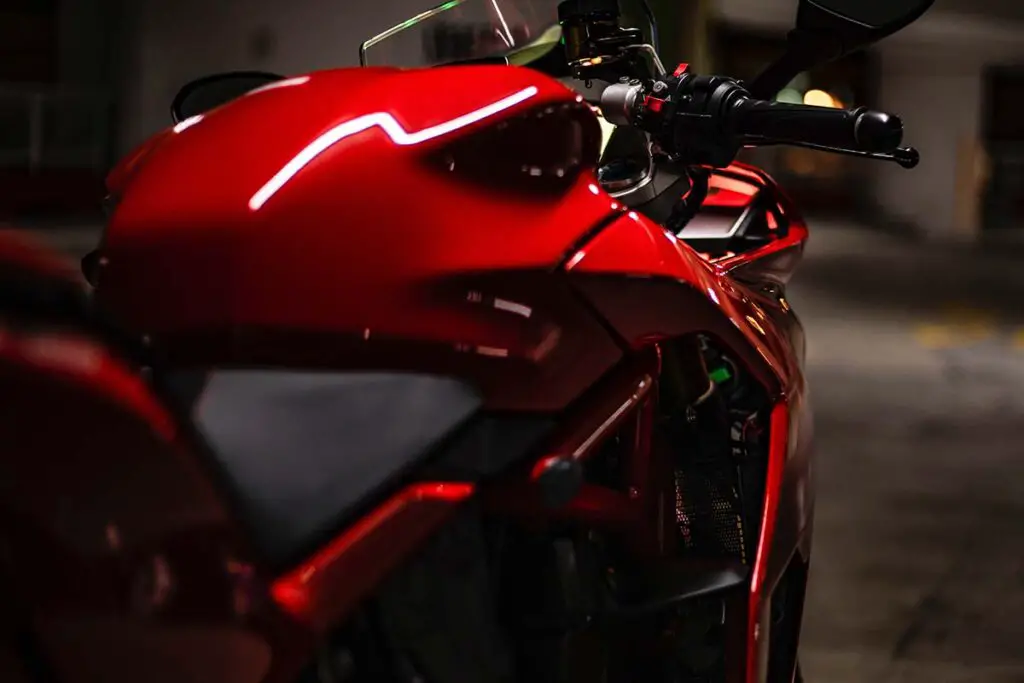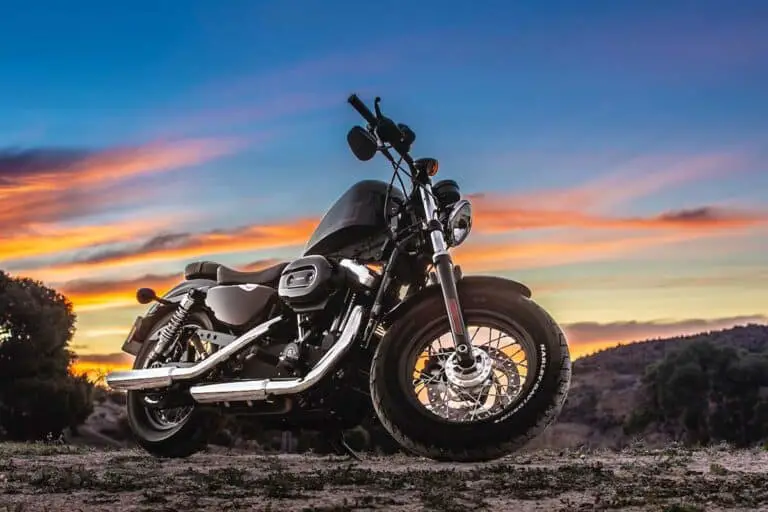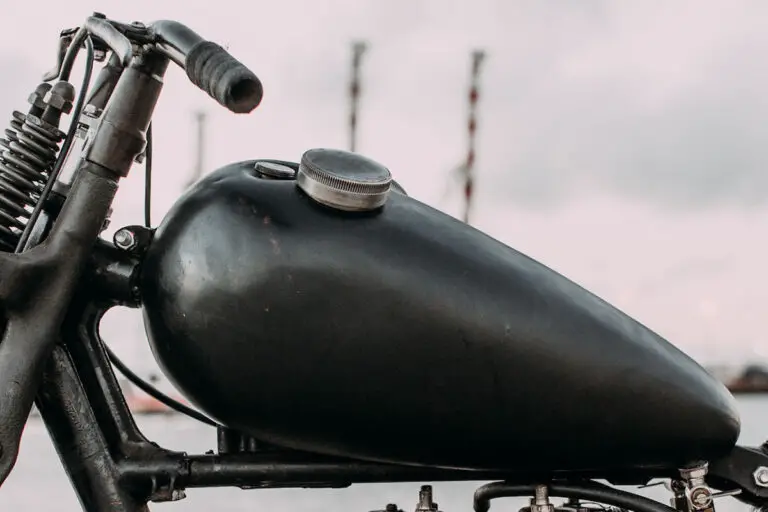How to Clean Motorcycle Fuel Injectors (10 Steps)
Disclosure: We may get commissions for purchases made through links in this post.
In recent years, fuel injectors have become the preferred fuel system for motorcycles (alongside other modes of transport) due to their low-maintenance and practically bulletproof nature. However, this should not be misconstrued as EFI-enabled two-wheelers not needing any TLC. That said, it is essential to know the basic care fuel injection systems necessitate, starting with how to clean motorcycle fuel injectors.
Cleaning motorcycle fuel injectors entails prepping the two-wheeler, using a high-quality cleaning solution, and taking the bad boy for a test drive after. Depending on your thumper’s make and model and your mechanical adeptness, the entire process may consist of 6-10 easy-to-follow steps.
The longer version of how to clean motorcycle fuel injectors is as follows:
- Dress for the task at hand.
- Ready your tools.
- Choose a well-ventilated area.
- Locate your fuel injectors.
- Clean your motorcycle fuel injectors.
- Connect your fuel injector cleaning kit to your motorcycle fuel port.
- Remove your fuel tank cap.
- Turn your motorcycle on.
- Remove the fuel injector cleaning kit.
- Test drive your motorcycle.
Cleaning fuel injectors may sound daunting, but they are easier than imagined. There are procedures that new motorcycle owners can follow while still enabling more experienced motorheads to do a deep, thorough clean of their fuel injectors.
When followed to the T, either series of steps will help guarantee the longevity of your fuel injection system and your motorcycle in general.

Different Types of Fuel Injectors and Fuel Injection Systems
Before we delve into the gist of today’s article, let us first acquaint ourselves with the different fuel injectors and fuel injection systems. This way, we will better understand how these fuel systems work and how they can get dirty or clogged. (For pictures of the different fuel injectors and their compatibility, click this link for reference.):
Fuel Injection Systems
Single-Point Injection or SPI System (a.k.a. Throttle Body Fuel Injection or TBFI)
According to Auto Expose, it is one of the earliest FI systems used following the discovery of injection systems in engines. With this configuration, a fuel injector is placed on the throttle body as a substitute for a carburetor. As its name also implies, there is only one fuel injector in use, regardless if the vehicle has one or multiple cylinders.
Because of its conservative setup, it functions similarly to a carburetor. While gasoline spreads into the throttle body room, it comes out of a fuel injector and not the carburetor jet. However, the main difference between the two fuel systems is that fuel delivery is much better in single-point systems due to the volume of gasoline being pre-calculated by the ECU.
On the downside, engine performance at high RPMs tends to be disturbed because fuel only flows through a single injector.
- Pros: Enhanced fuel delivery
- Cons: Engine performance is unsettled at high RPMs
Multi-Point Fuel Injection or MPFI System (a.k.a. Multiport Injection)
MPFI is a newer technology based on single-point injection systems or SPI. While both mechanisms are essentially the same, the multi-point system has its number of fuel injectors matching the engine cylinder amount. Moreover, these injectors are inside the intake manifold, making for an enhanced (not to mention direct) fuel delivery into the cylinders.
Perhaps, the only setback of this configuration is that regardless of their count, all fuel injectors spray fuel synchronously. This becomes disadvantageous if one of the cylinders is already in the combustion phase, as fuel is wasted on it.
- Pros: Enhanced fuel delivery and engine performance
- Cons: Wasted fuel resulting from pre-set timing of the system and its fuel injectors
Sequential Fuel Injection or SFI System
Widely used in recent-year models, the sequential fuel injection system is like an upgraded MPFI. While it is similar to the latter in that the injectors match the cylinder count, it is different because each fuel injector operates individually (following the timing of each cylinder).
If a cylinder is in the suction phase, only the injector corresponding to that cylinder works — leaving the rest of the injectors idle.
The alternate function of each fuel injector is made possible through the injection system’s scheme controller, which is more complex than multi-point injection. Because the controller enables each fuel injector to work independently, motorcycle engines with sequential fuel injection systems like the 2006 Harley Davidson Sportster 1200 tend to perform better and use better fuel.
- Pros: Enhanced engine performance and fuel economy; most practical and economical injection system of the lot
- Cons: More complex scheme controller, which may pose a problem in the event of damage or come servicing
Direct Injection System
As its name suggests, this system has fuel injectors designed to spray fuel directly into the cylinders without going through the intake manifold. The said mechanism makes for dramatically improved fuel economy and elimination of possible fuel condensation on the intake. Because of its setup, the direct injection has the best fuel delivery out of all injection systems discussed in this section.
This latest injection system was initially designed for diesel engines but eventually applied to gasoline-fed power mills. This could be the reason why its layout visually resembles a diesel engine.
However, the system’s original application was not in motorcycles but in Swedish trucks and buses — with the first hybrid direct injection system called the Hesselman engine mass-produced between 1925 and 1947.
- Pros: Enhanced engine performance, fuel delivery, and fuel economy; more precise fuel metering
- Cons: Has a higher propensity to result in clogged fuel systems and engine carbon buildup
Fuel Injectors
Side-Feed Fuel Injectors
In this style of fuel injector, the injector body is surrounded by fuel. The latter is then fed through holes located on the side of the fuel injector — hence the term side-feed. TBFI and manifold injection systems make use of these fuel injectors.
Top-Feed Fuel Injectors
Conversely, this style utilizes fuel injectors fed with gasoline or diesel from the top of the injector. It has three sub-categories: (normal) top-feed, hose-end, and direct fuel injectors. Standard top-feed injectors are the most common of the three and employ a common fuel rail. Depending on the variety, they could be secured to the fuel rail with injector clips.
Hose-end injectors, on the other hand, have a hose that connects the injector to the fuel rail with the help of a hose clamp and a ferrule. They are slightly better than standard top-feed injectors because they have two parts that secure the fuel injector to the fuel rail. However, their biggest setback is that the hose becomes brittle and eventually gets damaged with age.
Lastly, we have direct fuel injectors. They function similarly to a manifold-type injector in principle, but they also use a common fuel rail and O-ring setup for sealing, much like a normal top-feed injector.
DFIs inject highly atomized fuel into the combustion chamber under extremely high pressures ranging from 450 psi to 3,000 psi. Side-feed and top-feed injectors need only fuel pressures from 38 psi to 100 psi to operate.
Symptoms of a Bad or Dirty Fuel Injector
An obstructed fuel injector can escalate pretty quickly to compromised fuel delivery and possible parts replacement when left unattended. Keep an eye out for this non-exhaustive list of indicators signaling that it is time to clean those fuel injectors — lest you risk experiencing bucking or, worse, having a dead engine:
- Performance issues (Engine stalling or failing, rough idling)
- Engine misfiring
- Plummeting gas mileage (more visits to the pump station)
- Reduced fuel economy
- Unpredictable RPM needle (or engine does not hit full RPM)
- Starting issues
- Engine vibrations and surges under various throttle loads
- Strong gasoline/fuel smell (or an actual fuel leak)
- Irritating idle noises coming from the engine or pre-ignition sounds
- Throttle hesitation when accelerating
- Visible smoke from the exhaust pipe
- Engine knocking or detonation
- Illuminated Check Engine Light
- Oil thinning and hydro lock leading to engine failure
- Reduced power output
- Failed emissions testing
How to Clean Motorcycle Fuel Injectors
So far, we have gone over the different fuel injection systems and identified tell-tale signs associated with a bad or clogged fuel injector.
Now to the meat of today’s guide — let us delve into how to clean motorcycle fuel injectors (note that though these steps are not encompassing, they cover general requirements for cleaning fuel injectors with a cleaning kit):
How to Clean Motorcycle Fuel Injectors Without Removing Components:

1. Dress for the task at hand.
Before beginning the fuel injector cleaning process, clad yourself accordingly. You may opt for overalls or a fitted long-sleeved top and full-length trousers just to protect your skin while working. Do not forget to wear protective glasses for your eyes, as you will be dealing with fuel injector cleaners.
2. Ready your tools.
You will need a wrench set, an air compressor, and a fuel injector cleaning kit. You may also try cleaning your fuel injectors with seafoam, although check for compatibility first and take care not to use seafoam excessively.
3. Choose a well-ventilated area.
It is best to clean your motorcycle’s fuel system in an open garage or driveway. But if those spaces are unavailable, just make sure you go for a well-ventilated area. Having a work desk to go with it would be ideal, as the ability to lay out your tools and have them within reach can quicken the cleaning process.
4. Locate your fuel injectors
Check your owner’s manual for step-by-step instructions on accessing your fuel injectors. Depending on your motorcycle and what the manual recommends, you may need to remove the battery, tank, and airbox and disconnect fuel system components such as the fuel pump and pressure regulator.
5. Clean your motorcycle fuel injectors.
If you intend to clean your fuel injectors individually and outside the motorcycle, you may need to drain fuel pressure by running the engine with the fuel pump disconnected.
Once done, you can safely remove the fuel injectors, remove their O-rings/seals, and clean them individually using a soft-bristled brush. Use a fuel injector jumper to open the injectors and spray cleaner through each side. Then put your clean fuel injectors back in place.
6. Connect your fuel injector cleaning kit to your motorcycle fuel port.
Should you feel uneasy about removing and cleaning the fuel injectors individually, this is what you should do next. Locate the fuel port on your two-wheeler by checking your bike’s fuel rail first, then follow the directions on the cleaning kit for attaching the hose and port.
Verify that the hose is fitted securely and properly to the port. Lastly, pour in the recommended amount of fuel injector cleaning formula.
7. Remove your fuel tank cap.
Removing the gas cap helps loosen dirt that may potentially be clogging the fuel rail, injectors, and line. But more importantly, it prevents the excessive buildup of pressure (caused by the cleaning kit) that may lead to combustion.
8. Turn your motorcycle on.
Starting your engine allows the cleaning agent to flow into and circulate through your fuel injection system and fuel injectors. So, let your engine run for about 5-10 minutes and wait until the fuel injector cleaning kit is all consumed. Once the cleaning kit is all used up, your bike’s motor should stop running.
9. Remove the fuel injector cleaning kit.
If you did step #6 and have completed the cleaning process, disconnect the cleaning kit from your motorcycle fuel port and replace the pressure regulator and fuel pump (among other components) that you disconnected earlier.
Ensure all lines are fitted snugly to avoid potential leaks or line disconnection the moment your two-wheeler is running. Do the same for your fuel tank cap.
10. Test drive your motorcycle.
This step will help you confirm if fuel injectors are working properly after cleaning. So during the test drive, listen for unusual noises or odd motorcycle behaviors. Check your gauges and see if anything fuel-system related is erratic or out-of-spec.
If any or all of these problems persist, contact a mechanic immediately and have your fuel injectors inspected and cleaned professionally.
If you want to clean motorcycle fuel injectors yourself without removing the fuel injectors, pump, and the like, you may do so. The entire process is similar to what this section enumerates, minus removing the parts needed to access the fuel injectors.
You need only ensure that your fuel tank is nearly empty before pouring in the amount of fuel injector cleaning formula specified in the cleaning kit. Then fill the fuel tank as directed — full or otherwise.
On a separate note, if you are adept with cleaning carburetors, then fuel injectors should be much simpler for you. With fuel injectors and throttle bodies, clean them as you would a carburetor by following these steps:
How to Clean Motorcycle Fuel Injectors With Removal:
1. Remove the fuel injectors from the motorcycle.
Then use a 9-volt battery and a fuel injector jumper like the Motion Pro Fuel Injector Cleaner Kit (view on Amazon) to open the injector once clamped onto the terminals.
2. Install the engine side of the injector into one of the two ports found on the tool first.
Clamp it down with the connector facing the outside of the tool, but do not overtighten it. Next, insert the connector for your motorcycle into the tool and injector.
(Note: Some motorheads opt to remove the internal screen filter at the rear of the fuel injector when cleaning them. You can do the same, but it is completely optional.)
3. Loosen the red knob on the tool and insert the tube from the can of injector cleaner into it.
Tighten the knob lightly to seal the tube to the injector jumper tool.
4. Press the red button on the tool to open the injector solenoid and allow the cleaner to pass through the fuel injector.
With the fuel injector open, spray through it with a fuel injection cleaner. Perform this step quickly, as the 9-volt battery drains in no time while doing this.
5. Use pressurized air to blow the fuel injector out after.
Also, have a clean cloth serve as a “catch basin” for the dirt and debris that gets blown out of the fuel injectors — this would help you determine whether the injectors are thoroughly cleaned and good to go.
Do steps #2 through #5 for each fuel injector. After which, do the same steps but with the injectors turned in the other direction.
6. Perform a visual test of the injector tip spray pattern while subjecting the cleaner-filled fuel injector to pressurized air.
Just note that when you initially back-flush the injectors, you will not see a spray pattern but rather fluid bubbling out and pushing out dirt and debris.
Repeating a couple of times should enable you to see an even spray pattern. But if you still do not see one at this stage, give the injector cleaner a minute to soak before blowing it out again with pressurized air.
Recommended Fuel Injector Cleaning Intervals

Online references can sometimes be obscure, revealing too much conflicting information on various topics — and cleaning intervals for motorcycle fuel injectors are no exception. Those stringent with upkeep advice 2-3 times a year or whenever the engine idles rough.
Most motorcyclists agree on the interval of every 25,000 to 45,000 miles or three years. But others stretch out this timeframe to 60,000 to 90,000 miles.
So for accuracy and to side with caution, I strongly suggest referencing your owner’s manual for manufacturer-recommended cleaning schedules.
Cleaning your fuel injectors and entire fuel system in a timely manner yields several benefits. Among them are improved gas mileage, reduced toxic emissions, healthy motorcycle and engine performance, and longevity of the engine, fuel system, and fuel system components.
All these perks are fundamental to enjoying your two-wheeler to the fullest — hence, cleaning your fuel injectors should never be procrastinated.
Top Picks — Fuel Injector Cleaners for Motorcycles
- Chevron Techron Concentrate Plus Complete Fuel System Cleaner (view on Amazon)
- Lucas Oil Deep Clean Fuel System Cleaner
- Sea Foam Motor Treatment (SF-16) (view on Amazon)
- Gumout Regane High Mileage Fuel System Cleaner
- Gumout Fuel Injector Cleaner (510019)
- Red Line Complete SI-1 Fuel System Cleaner
- Royal Purple Max Atomizer Fuel Injector Cleaner
- Royal Purple Fuel System Cleaner and Stabilizer Max-Clean
- Liquid Moly Jectron Fuel Injection Cleaner
- Amsoil PI Performance Improver
- Cataclean 120007 Complete System Cleaner (view on Amazon)
Special Mentions:
- STP Ultra 5-in-1 Fuel Cleaner and Stabilizer
- STP Direct Injection
- IC5 Concentrated Fuel Injector Cleaner
Conclusion – How to Clean Fuel Injectors on a Motorcycle
In summary, here are the steps on how to clean motorcycle fuel injectors:
Without removing components:
- Dress for the task at hand.
- Ready your tools.
- Choose a well-ventilated area.
- Locate your fuel injectors.
- Clean your motorcycle fuel injectors.
- Connect your fuel injector cleaning kit to your motorcycle fuel port.
- Remove your fuel tank cap.
- Turn your motorcycle on.
- Remove the fuel injector cleaning kit.
- Test drive your motorcycle.
With removal:
- Remove the fuel injectors from the motorcycle.
- Clamp the fuel injectors onto the injector jumper tool/cleaning kit.
- Insert the injector cleaner tube and seal it to the jumper tool.
- Open the injector solenoid and begin spraying the injectors with an injection cleaner.
- Use pressurized air to blow out and thoroughly clean the injectors.
- Perform a visual test using pressurized air for an even spray pattern.
Even if you currently do not need them, having a working knowledge of these procedures will come in handy when the need arises. Either process will save you $250 to $2,000 for a complete fuel injector replacement.
That said, clean your fuel injectors (or have them cleaned professionally) at the first sign of rough idling or other relevant problems. But should you choose to do it yourself, these steps should set you up for success!






